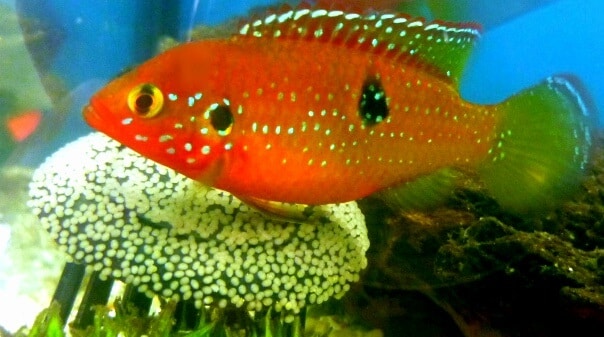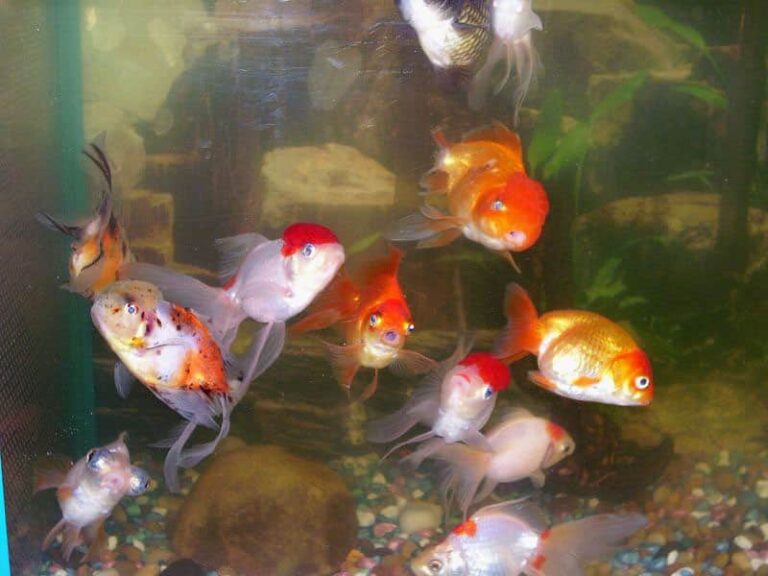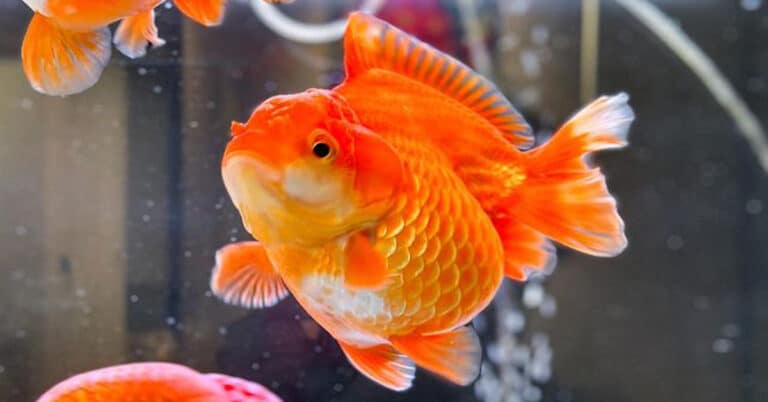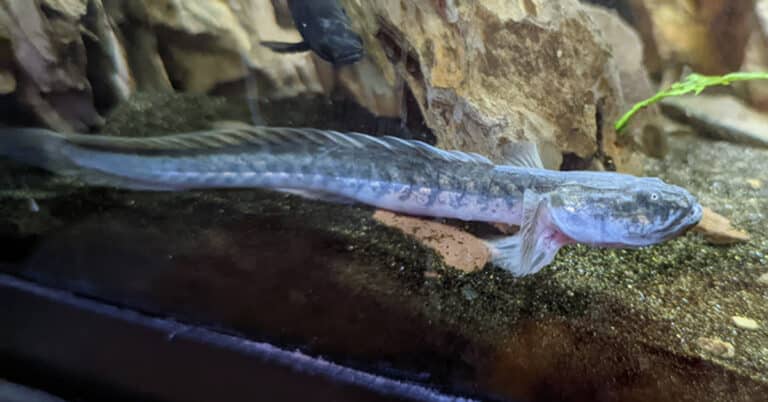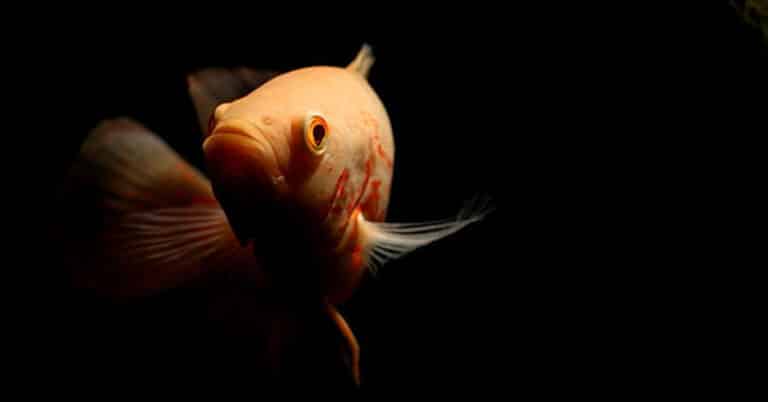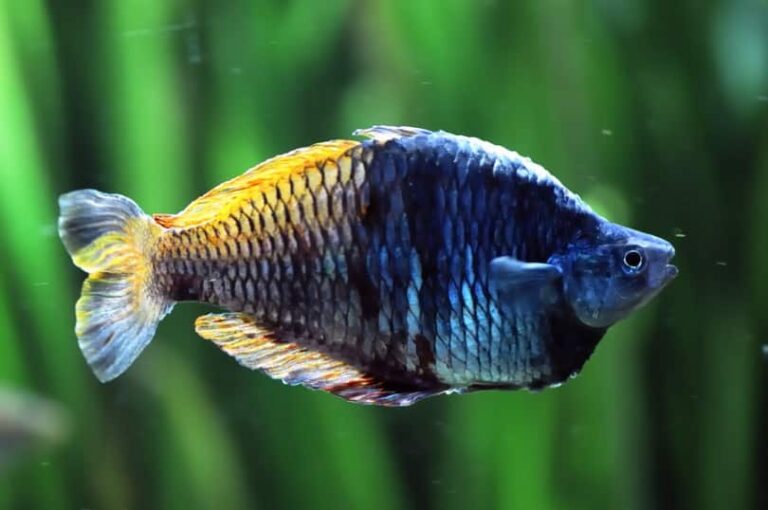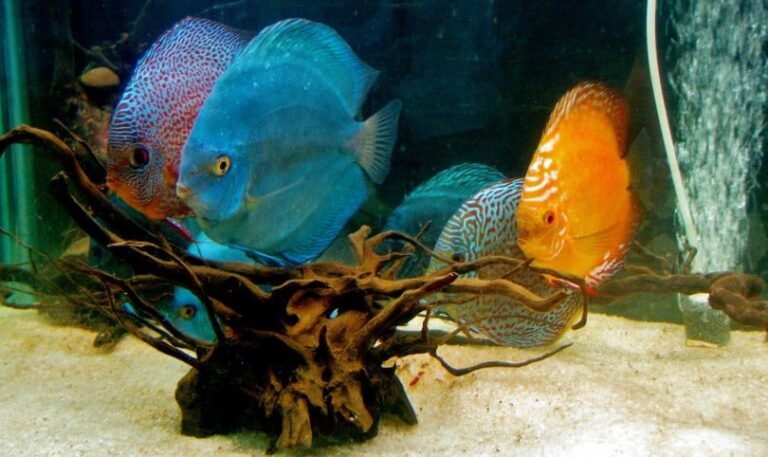Jewel Cichlid
Scientific Classification
| Kingdom: | Animalia |
| Phylum: | Chordata |
| Class: | Actinopterygii |
| Order: | Perciformes |
| Family: | Cichlidae |
| Subfamily: | Pseudocrenilabrinae |
| Tribe: | Hemichromini |
| Genus: | Hemichromis |
| Type Species: | Hemichromis Fsciatus |
Hemichromis, which belongs to the category of fishes from the Jewel cichlid family, is called by several names like Green Jewel Cichlids, Jewel Fish, Green Jewel, and so on. These fish are endemic to the vicinity of West Africa. You can see the Hemichromis species in streams, creeks, lakes, and rivers in different types of water such as brackish water lagoons having muddy bases.
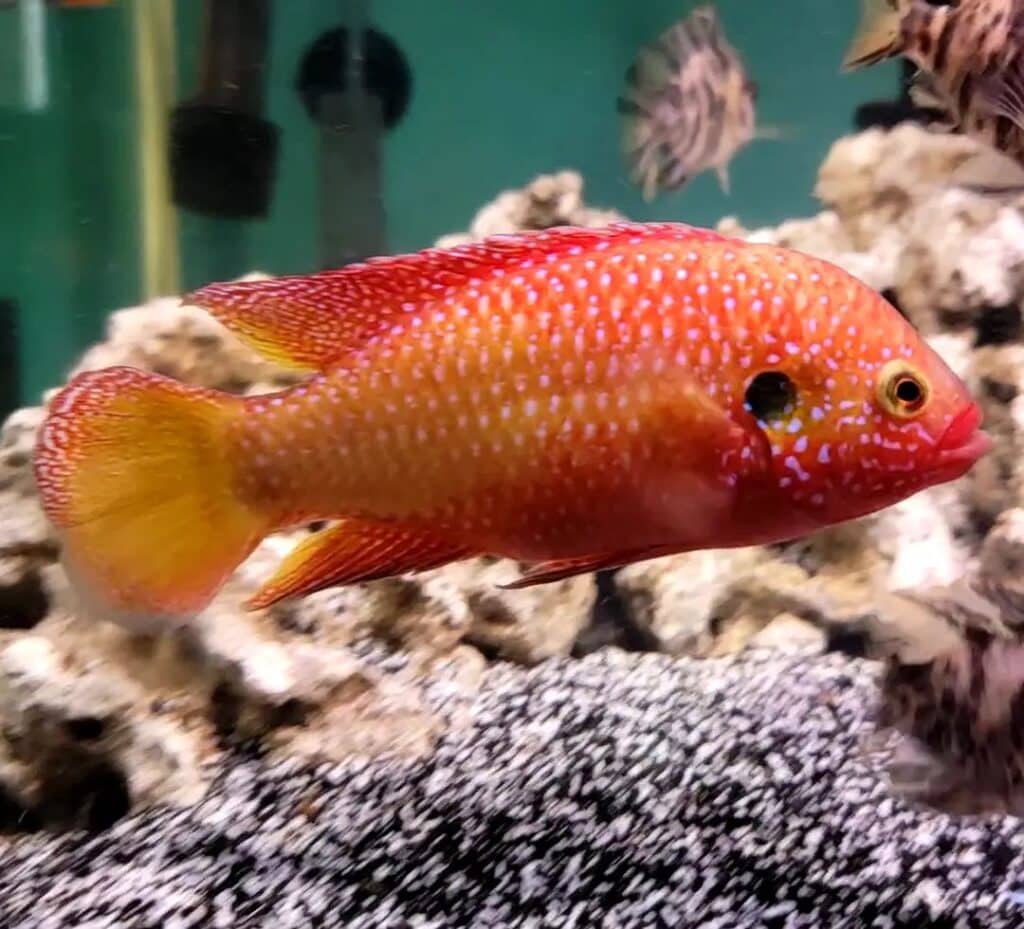
Habitat and Range
This jewel cichlid is an enduring type of fish; you see them in the Western regions of Africa, extending from the Southern guinea to the Central regions of Liberia.
Description
The maximum full length to which a Hemichromis grows is recorded as 8 to 30 cm. (3.1 to 11.8 in.). In aquariums, they do not grow as big as in their natural habitat. There are instances when the Hemichromis Bimaculatus have attained lengths of 20 cm. (7.9 in.) in nature, but, in aquariums they rarely attain a length more than 15 cm. (5.9in.)
Several varieties of Hemichromis have bright colors, and normally, during the breeding season, their body appears brighter in color. There is a limit for sexual dimorphism. The color of the male jewel cichlids turns brilliant, and in certain varieties, the ventral and dorsal fins and the anal become more pointed. In types like the Hemichromis Cristatus, the male and female are of the same bright color. Similar to the other cichlids, the care required for the clutch of the jewel cichlids is sophisticated. The breeding pairs of the Hemichromis varieties are characteristically monogamous. The female lays their eggs on even surfaces of stones or leaves. The duty of raising the fry and guarding the eggs is shared by both the male and its female.
The Hemichromis Bimaculatus, generally called by the name Jewel cichlids have two dark colored dots (at times they are three). The name Bimaculatus is derived from the Latin word meaning “2 spots”.
Identifying the gender is not easy, however, at the time of breeding, the color of the males turn brilliant. In case you intend breeding such a fish, you would do well in keeping a group of six or more, and keeping a watch on them to observe them pairing. Once you understand the pairs, remove the rest to avoid fighting among them.
How to Grow at Home
Jewel cichlids are not ideal for beginners or in public aquariums. Place a lot of juvenile ones in a large aquarium decorated with wood and stones for them to take shelter, till the time you pair them for breeding. Their instinctive nature to begin quarreling merits separate aquariums.
Breeding
Even though some quarters opine that it is difficult to sex them, others believe that it is possible. Certain people report that they have been spawning them for many years.
Bear in mind that as far as compatibility is concerned, a single male will have sex with only one female, all its life. In case there is a fight between two males for a female, then that which loses is ignored by the new couple. Maintain the ratio between the males and females in a ratio of more females to the males.
The tail is the identifying mark. The tail of the females has a red border and above the tail, it is slightly colored. This color gets diminished to grayish yellow towards the half of the tail. The male possesses a lattice work colored sky blue and red all along, all over its tail, continuing
Behavior
The jewel cichlid spawns on the flat surface of rock that is previously cleaned, it lays as many as 500 eggs, and they are fertilized immediately by the male. The female transports the fry by its mouth. The male as well as the female takes good care of their offspring. The male and female takes turn in nursing the fry and keeping watch on the nest. Both bring up the fry. The eggs get hatched within 3 days, following which, after 4 days; the fry swims freely in the water. At this time, the fry is ready to eat powdered flakes and little brine shrimps. Do not take away all the fry from their parents, this leads to aggression (perhaps leading to death) among the couple.
Tank
The jewel Cichlid is adjustable to public aquariums. When they are put into tanks that are properly set, their violence is reduced, since the space is limited in that terrain. Be careful with your Jewell Cichlid as it can sometimes pinch you with its fin, when it is underfed. This is because of its instinct to feed on other fish in conditions of paucity of food supply. When they are in the wild.
When in custody, an aquarium if 20 gallons is ideal for pairing a minimum size is ideal. Place flower pots, rocks and plants in the aquarium. Even though the Hemichromis Bimaculatus never destroy plants, there is a possibility for the plants getting uprooted, so put sturdy plants in the tank. Besides providing caves in the tank for them to hide and take shelter. The apt temperature should be 72 to 78 F. The Jewel cichlids are likely to quarrel among themselves, particularly when they are paired and begin to breed. At this time they dislike the entry of other fish in the tank. Therefore, in case you intend placing other fish in the same tank, then a tank divider is essential.
Think twice before venturing to place, a jewel cichlid with fish that are not so violent in the same tank. Placing a single jewel with other fish is fine; however a pair creates problems with others. The jewel cichlid loves digging, which makes it difficult to have live plants in the tank.
The Condition of Water
The ideal state of water is a hardness of 15dH, a pH of 7 and temperature of 78oF.
Nutrition
If you want to see your Jewel plump, well then feed them with different kinds of food. First give them flakes or pellets. Later on, give them frozen food of proper size. Feed them tiny earthworms that contain a secret secretion that urges them to sex. The same is with halved meal worms. You notice a color change in their belly size and its level of aggression.
Jewel Cichlid Setup
The Jewel cichlids are unsuitable for aquariums smaller than 150 L or 40 gallon. A small aquarium is suitable only for the purpose of breeding. Even though Jewel cichlids appreciate a pH of 6.5 to 7.5, they are adjustable with a pH of 6 to 8, and a temperature of 23 to 27 C (74 to 80 F). Jewel cichlids enjoy digging; this disturbs the plants and damages them, in case they are not set firm in the aquarium. There are plants which grow well with jewel cichlids and certain plants need support by stones around their base to keep the roots undisturbed. Some Such plants are the Cryptocoryne and Amazon varieties.

Having discovered a fondness for insects while pursuing her degree in Biology, Randi Jones was quite bugged to know that people usually dismissed these little creatures as “creepy-crawlies”.

